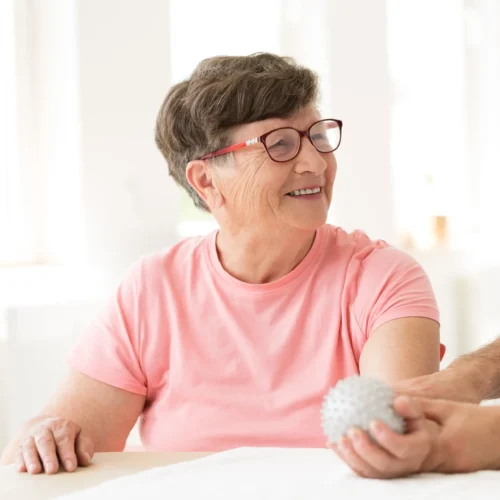Diabetes and Stroke
Diabetes is a medical condition involving the hormone insulin. Insulin is a hormone our bodies use to help turn glucose (sugars) in our food into energy.
After you eat, sugar from the food is broken down and pumped into your bloodstream. Your blood transports this sugar all around your body. Insulin is the key that grants the sugar access to the cells in your body. These cells use the sugar for energy. Without enough insulin or without effective insulin, the sugar builds up in your bloodstream, causing high blood sugar.
Type 1 and type 2 diabetes
There are two types of diabetes: type 1 and type 2.
In type 1 diabetes
The body does not produce enough insulin.
In type 2 diabetes
The body has enough insulin but it has lost its effectiveness.
In both cases, when our bodies don’t have enough insulin or don’t use it correctly, it eventually causes blood glucose levels to rise. Elevated blood glucose levels can cause complications including heart damage, problems with vision and can lead to stroke.
Symptoms of diabetes
Someone with diabetes may:
- Feel thirsty
- Feel very tired and have no energy
- Experience weight loss, or
- Urinate more than usual
After a stroke, you may get a lot of testing done. You may receive a blood test that assesses for diabetes which looks at your blood sugar over time, called hemoglobin A1C. If you are diagnosed with diabetes after your stroke, your healthcare team should connect you with a team to offer education and treatment options.
Options for support
The Centers for Disease Control (CDC) offers lifestyle change programs across the country. This is a 12-month wellness program to support individuals at risk or newly diagnosed with diabetes. The first 6-months of the program, the group meets once a week and the second 6-months, the group meets once or twice a month.
The Association of Diabetes Care and Education Specialists (ADCES) also has some great resources and runs groups to support people diagnosed with diabetes. These groups provide diabetes self-management education and support with one-on-one and group coaching related to diabetes care.
Managing your diabetes
People who have diabetes are twice as likely to have a stroke. Therefore, it is important to know how to best manage your condition. Many of the recommended lifestyle changes for diabetes are the same ones that are recommended after stroke.
It’s important to take your blood glucose levels frequently. Your healthcare team can help teach you how to do this and set you up with a plan that works for you.
Take medications as directed by the healthcare team. Medication is affected by the timing of food intake.
Eat a healthy diet. Meal Planning can help you control your diet.
It is recommended to quit smoking and limit drinking to a minimum.
Maintain a healthy weight and try to exercise regularly. Any kind of exercise you are able to do is beneficial, including going for walks around your house or doing exercises from a chair. Remember, you can ask your healthcare team for guidance with this.
Physical activity after meals helps reduce glucose spikes. Moving around for even 10-minutes after each meal is beneficial.
Foods to Eat
- Vegetables (artichoke, asparagus, broccoli, cauliflower, tomato, bell peppers, etc.)
- Fresh whole, pre-chopped, frozen, canned (look for “no added salt”)
- Fruits (apples, cantaloupe, blueberries, grapes, etc.)
- Fresh whole, pre-chopped, dried, frozen, canned (look for “no added sugar”)
- There are several fruits that are particularly beneficial, as they are lower in sugar compared to other fruits. These encouraged fruits include: raspberries, strawberries, blackberries, kiwis, watermelon, avocado, cantaloupe, oranges, peaches.
- Whole Grains (brown rice, quinoa, millet, whole wheat, barley, etc.)
- Lean Proteins (turkey, skinless chicken, tofu, lean beef, pork loin, shrimp, fish, eggs)
- Nuts & Seeds (almonds, cashews, sunflower seeds, chia seeds, etc.)
- Low-Fat Dairy (cottage cheese, milk, yogurt, cheese)
Foods to Limit
- Foods high in fat (deep fried foods, ice cream, bacon, sausage, pizza, etc.)
- Foods high in salt (canned soups, hot dogs, potato chips, pizza, etc.)
- Foods high in sugar (baked goods, soda, candy, milkshakes, etc.)
- Processed foods* (ice cream, potato chips, sausage, instant soups, etc.)
*What’s the difference between a whole food and a processed food?
In general, think of this as foods that come in a box or a bag. They typically have a nutrition facts label and a long ingredient list. For example, an apple does not have a nutrition facts label or ingredient list. It is an example of a whole food. Cheese crackers come in a box and have an extensive ingredient list. This is an example of processed food.
“Snack Formula” (Produce+Protein)
When selecting a snack, follow the snack formula to achieve blood sugar balance.
In general, pairing a form of produce with a source of protein will prevent a blood sugar spike, keep you fuller for longer, and provide consistent energy for several hours.
Examples:
- Apple + Peanut Butter
- Carrots + Hummus
- Grapes + String Cheese
- Celery + Cream Cheese
Select an item of produce and a source of protein from the below table to build a healthy, balanced snack.
Produce
oranges
cauliflower
raisins
dried figs
sweet potato
tomatoes
celery
bell pepper
avocado
raspberries
edamame
snap peas
broccoli
grapes
carrots
apple
peaches
Protein
low-fat cottage cheese
walnuts
lentils
black bean dip
low-sodium beef jerky
sliced cheese
cream cheese
roasted chickpeas
tuna
chicken
hard boiled eggs
pistachios
almonds
low-fat greek yogurt
string cheese
hummus
peanut butter (other nut butters)
Healthy Dessert Ideas
You can enjoy dessert while eating mindfully for diabetes. Here are a few healthy dessert ideas for diabetes:
- Graham crackers with nut butter
- Chia seed pudding
- Angel food cake with raspberries
- Sweet potato brownies
- Black bean brownies
- Frozen yogurt bites
- Avocado mousse
There are a few things to consider when building a “healthier” dessert:
- Choose low sugar options.
- Pair sugary foods with fruit or protein.
- Use portion control. Aim to consume a dessert portion no larger than the palm of your hand.
Citations
- Cleveland Clinic. (2022) Diabetes and stroke: Causes, symptoms, treatment & prevention. Cleveland Clinic Health Library. https://my.clevelandclinic.org/health/diseases/9812-diabetes-and-stroke
- Chen, R., Ovbiagele, B., & Feng, W. (2016). Diabetes and Stroke: Epidemiology, Pathophysiology, Pharmaceuticals and Outcomes. The American journal of the medical sciences, 351(4), 380–386. https://doi.org/10.1016/j.amjms.2016.01.011
- Stroke Association. (n.d.). Diabetes and stroke. https://www.stroke.org.uk/what-is-stroke/are-you-at-risk-of-stroke/diabetes
- American Diabetes Association. (2022) Get serious about stroke prevention. https://www.diabetes.org/diabetes/stroke
- American Diabetes Association. (2022). Diabetes and stroke prevention. https://www.stroke.org/en/about-stroke/stroke-risk-factors/diabetes-and-stroke-prevention
Support for stroke survivors and their care partners
Kandu’s stroke recovery services offer comprehensive support for both stroke survivors and their care partners. Our experienced doctors, nurses, and navigators take the time to understand your individual needs, developing personalized recovery plans and providing essential resources to help make recovery a lot smoother.



